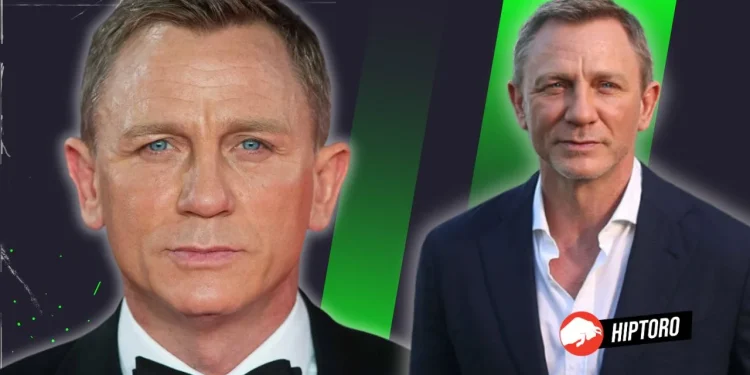Daniel Craig, a name synonymous with versatility and depth in contemporary cinema, has etched an indelible mark on the film industry through a series of performances that span across a wide spectrum of genres and characters. Renowned for his portrayal of James Bond, Craig’s career encompasses much more, offering a rich tableau of roles that demonstrate his range as an actor and his commitment to the craft.
This exploration into Craig’s top ten films reveals not just the iconic figure of 007 but a versatile artist capable of bringing complexity, nuance, and humanity to every character he embodies. A list of the top 10 movies starring Daniel Craig. Given his career, this list is likely to include a mix of his iconic roles as James Bond, along with other significant performances in drama, action, and possibly thriller genres.
1. Skyfall (2012) – Often cited as one of the best Bond movies, “Skyfall” received widespread acclaim for its storytelling, direction, and Craig’s performance.
2. Casino Royale (2006) – This film marked Craig’s first appearance as James Bond and was praised for revitalizing the franchise.
3. No Time To Die (2021) – Craig’s final outing as James Bond, noted for its emotional depth and action sequences.
4. Spectre (2015) – Another entry in the Bond series, featuring Craig in a global espionage plot.
5. The Girl with the Dragon Tattoo (2011) – A psychological thriller where Craig plays journalist Mikael Blomkvist.
6. Quantum of Solace (2008) – The sequel to “Casino Royale,” continuing the story of James Bond’s quest for revenge.
7. Logan Lucky (2017) – A heist comedy where Craig showcases his versatility in a non-bond role.
8. Layer Cake (2004) – A British crime film that helped establish Craig as a leading man.
9. Knives Out (2019) – A modern whodunit mystery with Craig playing the eccentric detective Benoit Blanc.
10. Road to Perdition (2002) – An earlier role for Craig, acting alongside Tom Hanks in this gangster film.
1. Skyfall (2012): A Masterpiece in the Bond Legacy
Skyfall, directed by Sam Mendes, is often hailed as one of the pinnacle achievements in the James Bond series, and for good reason. Released in 2012 to coincide with the 50th anniversary of the franchise, it brought a level of depth, sophistication, and character exploration previously unseen in many of its predecessors. Daniel Craig’s portrayal of the iconic spy in this film is widely regarded as one of his best performances, balancing the physicality of Bond with a newfound emotional vulnerability.
The film opens with a gripping sequence in Istanbul, setting the stage for a movie that blends high-octane action with a deeply personal story. “Skyfall” delves into James Bond’s past, revealing layers of his character while confronting him with a threat that hits closer to home than ever before. The antagonist, Raoul Silva (played memorably by Javier Bardem), is a former MI6 agent turned cyber-terrorist, whose personal vendetta against M (Judi Dench) drives the plot towards a confrontation that tests Bond’s loyalty and resolve.
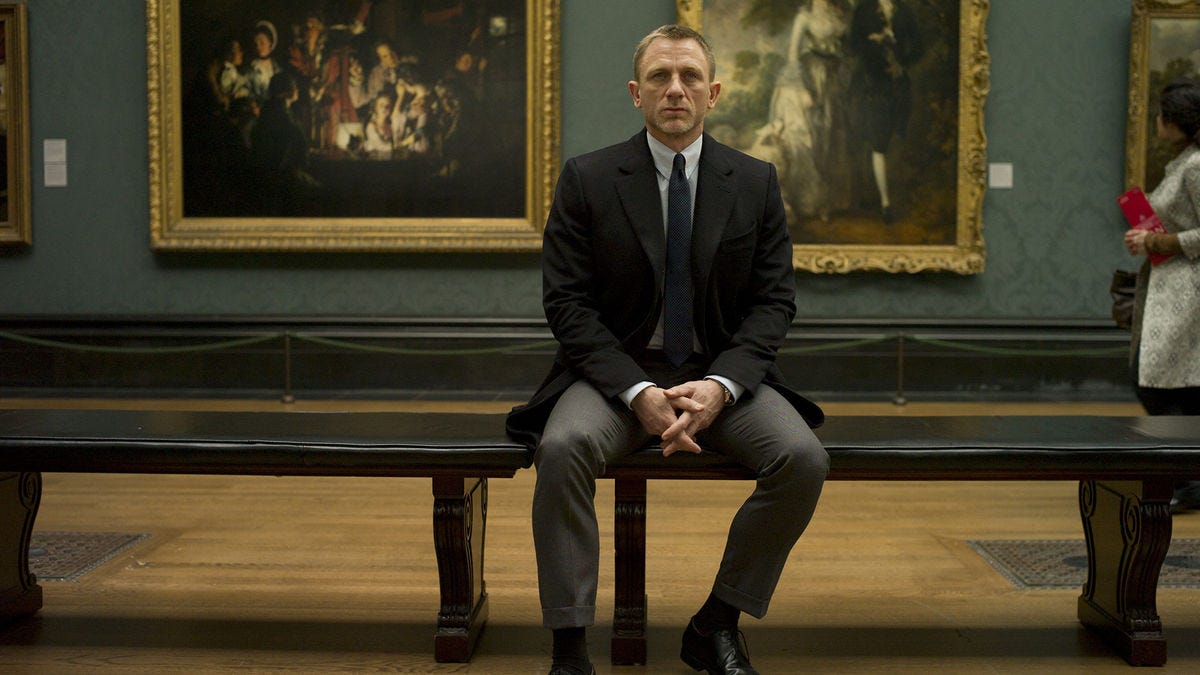
What sets “Skyfall” apart is its willingness to break the mold of traditional Bond films. It pays homage to the franchise’s legacy through subtle nods and overt references, yet it is not afraid to tread new ground. The movie explores themes of aging, obsolescence, and resurrection, both literally and metaphorically. Daniel Craig’s Bond is portrayed as a seasoned agent, physically and emotionally scarred, yet unwavering in his dedication to his duty. This vulnerability and depth add a layer of complexity to his character, making his portrayal more relatable and humanized.
The cinematography of “Skyfall” is another aspect that deserves special mention. Roger Deakins’ work on the film is stunning, with visually arresting sequences that range from the neon-lit skyscrapers of Shanghai to the desolate beauty of the Scottish Highlands. The film’s visual style not only serves the narrative but elevates it, enhancing the emotional weight of the story and the characters’ journeys.
Moreover, “Skyfall” benefits from a strong supporting cast, including Ralph Fiennes as Gareth Mallory, Naomie Harris as Eve Moneypenny, and Ben Whishaw as Q, each bringing new dimensions to their roles within the MI6. The dynamic between these characters and Bond adds richness to the story, grounding the high-stakes action in a world that feels real and tangible.

In conclusion, “Skyfall” is a testament to the enduring appeal of the James Bond franchise and a showcase for Daniel Craig’s talents as an actor. It strikes a delicate balance between honoring the legacy of its predecessors and forging its path, resulting in a film that is not only a high point for the series but a standout piece of cinema in its own right. With its compelling narrative, deep character exploration, and breathtaking visuals, “Skyfall” stands as a brilliant embodiment of what makes James Bond such an iconic figure in film history.
2. Casino Royale (2006): Reinvigorating James Bond
“Casino Royale,” directed by Martin Campbell, marked a significant turning point for the James Bond franchise. Released in 2006, it was Daniel Craig’s debut as the iconic spy, and his performance brought a grittier, more grounded approach to the character that was both critically acclaimed and embraced by audiences. This film was tasked with redefining James Bond for a modern era, and it succeeded by going back to Ian Fleming’s first novel, presenting a Bond who was both vulnerable and lethal.
The film opens with Bond earning his 00 status, setting the tone for a story that is both an origin tale and a modern espionage thriller. “Casino Royale” strips away the gadgets and excesses that had come to be associated with the series, focusing instead on character development and a more realistic portrayal of espionage. The plot revolves around a high-stakes poker game at the titular Casino Royale in Montenegro, where Bond must defeat terrorist financier Le Chiffre (portrayed by Mads Mikkelsen) in a game that becomes a battle of wits and endurance.
Daniel Craig’s portrayal of Bond is notable for its physicality and emotional depth. He brings a sense of vulnerability to the character that had not been explored in previous films, making his Bond more relatable and human. This vulnerability is highlighted in his relationship with Vesper Lynd (Eva Green), a Treasury agent with whom Bond falls deeply in love. Their relationship is central to the film, providing Bond with a personal stake that goes beyond his duty as an agent. The chemistry between Craig and Green is palpable, and their romance adds a layer of complexity to Bond’s character, driving home the personal costs of his profession.
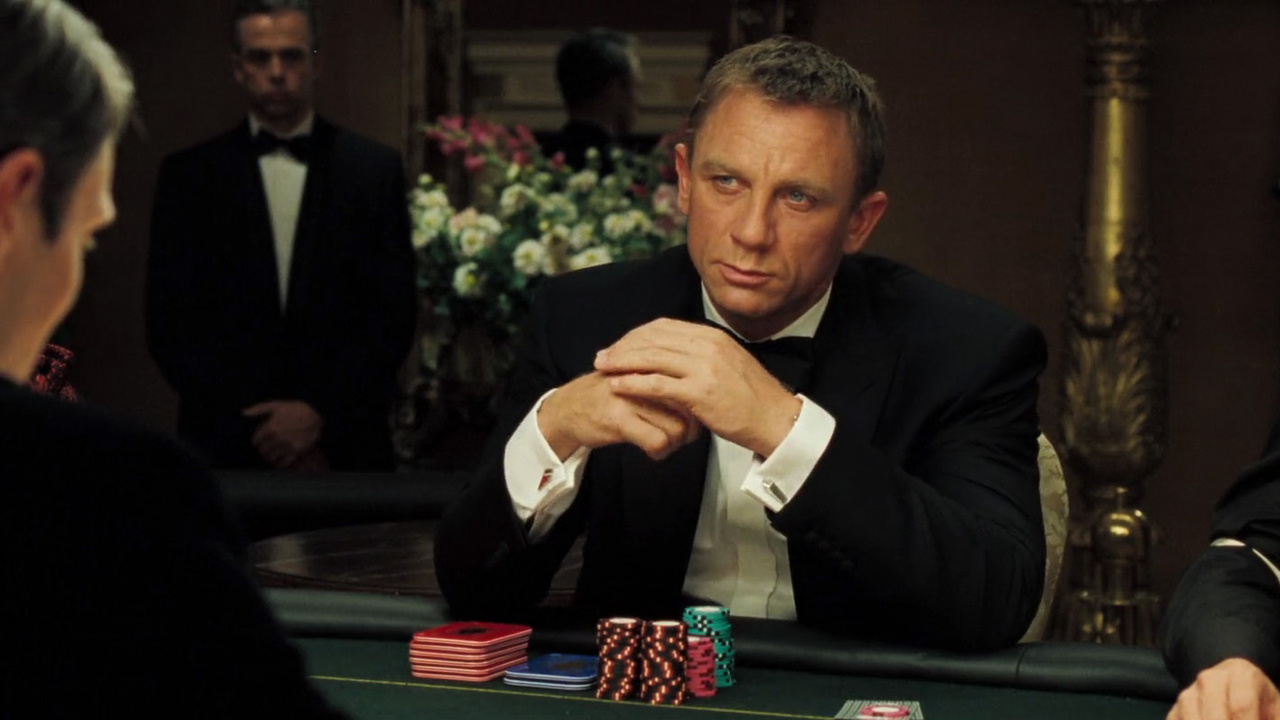
The action sequences in “Casino Royale” are grounded and brutal, eschewing the over-the-top spectacle for intense, well-choreographed set pieces that emphasize Bond’s physicality and resourcefulness. From the breathtaking parkour chase in Madagascar to the climactic showdown in Venice, each action scene serves to develop Bond’s character, showing his determination and the lengths he will go to achieve his mission.
“Casino Royale” also delves into the psychological toll of being a double-0 agent. Bond’s journey is not just about thwarting terrorism; it’s about his transformation into the spy known as James Bond. The film explores themes of trust, betrayal, and the moral ambiguities of espionage, challenging Bond’s worldview and forcing him to confront his values.
The film’s impact on the franchise cannot be overstated. “Casino Royale” reinvigorated James Bond for a new generation, setting a high bar for what a Bond movie could be. It established Daniel Craig as a worthy successor to the Bond legacy, capable of delivering both physical intensity and emotional depth. The film’s success lies in its ability to balance action with character development, ensuring that the audience is invested in Bond’s journey and the challenges he faces.

In conclusion, “Casino Royale” stands as a pivotal moment in the James Bond series, marking the beginning of a new era for the character. With its compelling narrative, strong performances, and a more realistic approach to espionage, it rejuvenates the franchise and establishes a new standard for what a Bond film can achieve. Daniel Craig’s debut as James Bond remains one of his most definitive roles, showcasing his ability to bring depth and complexity to the iconic spy.
3. No Time To Die (2021): A Fitting Farewell for Daniel Craig’s James Bond
“No Time To Die,” released in 2021, stands as a monumental entry in the James Bond series and marks the final appearance of Daniel Craig as the iconic British spy. Directed by Cary Joji Fukunaga, this film not only concludes Craig’s tenure as Bond but also seeks to tie together the narrative threads introduced throughout his era. Emotionally charged and sprawling in its scope, “No Time To Die” explores themes of sacrifice, loyalty, and the search for a personal life beyond the shadows of espionage.
The film kicks off with Bond retiring in Jamaica, having left active service. However, his peace is short-lived when his old friend Felix Leiter from the CIA turns up asking for help. The mission to rescue a kidnapped scientist turns out to be far more treacherous than expected, leading Bond onto the trail of a mysterious villain armed with dangerous new technology. This premise sets the stage for a globe-trotting adventure that revisits old allies and confronts new adversaries, all while delving into Bond’s complex relationships and his legacy as an agent.
Daniel Craig’s performance in “No Time To Die” is a nuanced portrayal of a character grappling with the weight of his past and the uncertainty of his future. Craig’s Bond is more introspective and vulnerable than ever before, reflecting on his career and the personal losses that have marked his journey. The film provides a deep dive into what drives Bond, presenting him not just as a skilled operative but as a man searching for meaning beyond his 00 status.
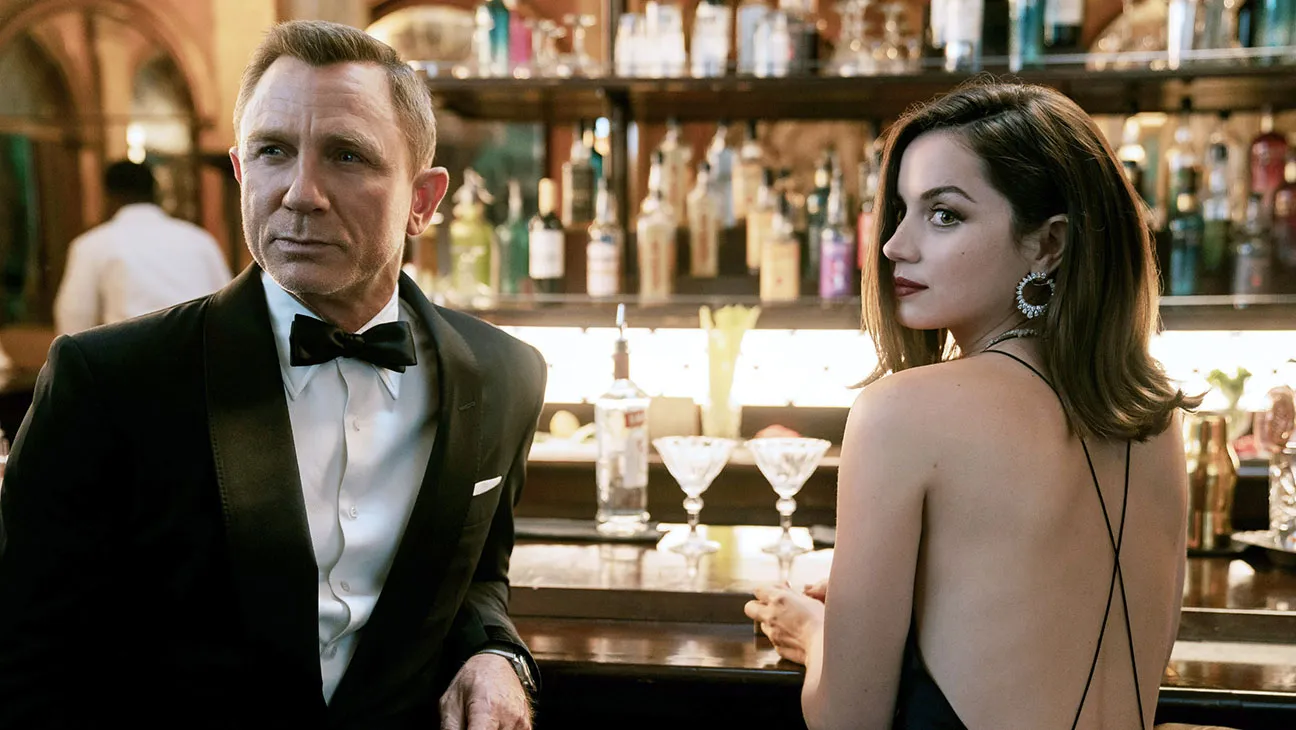
The film’s antagonist, Lyutsifer Safin, played by Rami Malek, is a formidable presence whose motivations are deeply personal, mirroring Bond’s struggles with loss and revenge. Safin’s plan and the technology he wields raise the stakes to a global level, challenging Bond in ways he has not been tested before. The confrontation between Bond and Safin is as much ideological as it is physical, highlighting the themes of legacy and the consequences of a life spent in the shadows.
“No Time To Die” also excels in its action sequences, which blend the traditional Bond spectacle with a modern sensibility. The set pieces are inventive and thrilling, from a high-speed chase through the streets of Matera, Italy, to a tense confrontation in a fog-laden forest. These moments are not just showcased for stunt work but are integral to the story, reflecting Bond’s journey and the personal stakes involved.
The film pays homage to the entire Craig era, bringing back characters such as Madeleine Swann (Léa Seydoux), Q (Ben Whishaw), M (Ralph Fiennes), and Moneypenny (Naomie Harris), each playing a pivotal role in Bond’s final mission. Their interactions with Bond are filled with a sense of history and camaraderie, underscoring the emotional depth of Craig’s last outing as Bond.
In crafting a conclusion to Daniel Craig’s run as James Bond, “No Time To Die” achieves a delicate balance between hhonoringthe traditions of the franchise and pushing its boundaries. The film’s emotional resonance, combined with its action and suspense, makes it a standout addition to the Bond saga. It offers a fitting farewell to Craig’s portrayal of the character, providing closure to his story while celebrating the enduring legacy of James Bond.

In sum, “No Time To Die” is not just a spy thriller but a poignant exploration of identity, duty, and the cost of service. Daniel Craig’s final performance as James Bond is a powerful testament to his impact on the franchise, leaving an indelible mark that will be remembered for years to come.
4. Spectre (2015): A Deep Dive into Bond’s Legacy
“Spectre,” directed by Sam Mendes, marks the fourth installment in Daniel Craig’s tenure as James Bond. Released in 2015, it weaves a narrative that delves into the shadowy depths of an organization that has been a specter over Bond’s life and the MI6. The film opens with a stunning sequence set during the Day of the Dead festival in Mexico City, a scene that immediately sets the tone for a film that combines classic Bond elements with a modern cinematic approach.
In “Spectre,” Craig’s Bond is on a rogue mission that uncovers the existence of the titular Spectre, a global criminal organization led by the enigmatic Ernst Stavro Blofeld, played with chilling detachment by Christoph Waltz. This discovery triggers a journey that takes Bond from the bustling streets of Rome to the snowy Austrian Alps and the scorching deserts of Morocco. Along the way, he encounters Dr. Madeleine Swann (Léa Seydoux), who becomes his closest ally and love interest, drawing him deeper into a personal and global conflict.
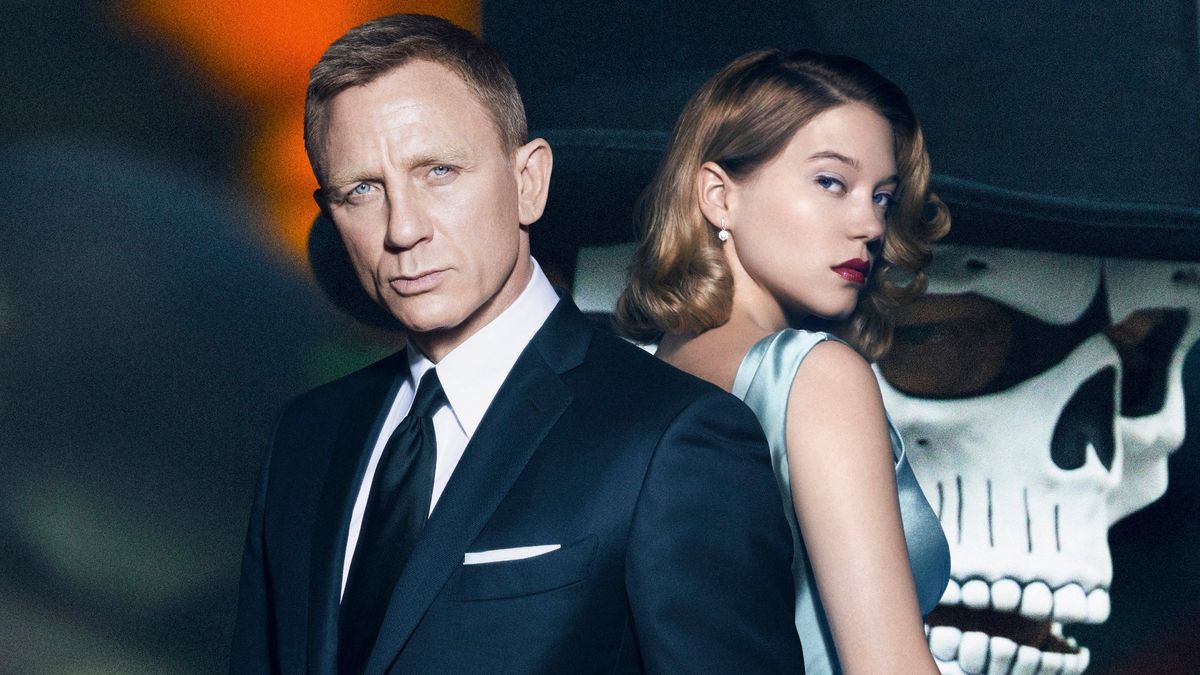
Craig’s portrayal in “Spectre” is a layered performance that blends the physicality and charisma expected of Bond with a vulnerability and weariness that hints at the toll his career has taken on him. The film explores themes of surveillance, control, and the relevance of spies in a digital age, posing challenging questions about freedom and privacy. Bond’s confrontation with Blofeld becomes not just a battle of wits and strength but a psychological duel that forces him to confront his past, his choices, and his legacy.
“Spectre” is notable for its attempt to link Craig’s previous Bond films through the presence of the Spectre organization, suggesting a deeper narrative continuity that adds weight to Bond’s actions and decisions. The film’s action sequences are among the series’ best, with a particularly memorable airplane vs. SUV chase in the Alps showcasing the franchise’s flair for thrilling set pieces.
However, “Spectre” is also a film of contrasts. It seeks to marry the grit and depth of Craig’s earlier outings with the series’ traditional escapism and grandeur, resulting in a Bond movie that is both ambitious in scope and intimate in its examination of its protagonist. While it received mixed reviews, with some critics pointing to its pacing and the execution of its plot twists, “Spectre” remains a significant chapter in the Bond saga, offering insights into the character’s enduring appeal and the complexities of the world he navigates.

In sum, “Spectre” stands as a testament to Daniel Craig’s impact on the James Bond franchise. It’s a film that seeks to honor the legacy of its predecessors while pushing forward into new territory, reflecting the ever-evolving nature of its lead character and the actor who brought him to life with unmatched intensity and depth.
5. The Girl with the Dragon Tattoo (2011): A Dark, Gripping Thriller
“The Girl with the Dragon Tattoo,” directed by David Fincher in 2011, is an American adaptation of Stieg Larsson’s bestselling novel. It stars Daniel Craig as Mikael Blomkvist, a disgraced journalist, who teams up with Lisbeth Salander, a brilliant but troubled hacker portrayed by Rooney Mara, to investigate a decades-old disappearance in a wealthy Swedish family. This film stands out in Craig’s filmography as it diverges from his action-packed roles as James Bond, showcasing his versatility as an actor in a gripping, dark thriller.
Set against the cold, bleak backdrop of Sweden, the film delves into themes of mystery, corruption, and the darker aspects of human nature. Craig’s portrayal of Blomkvist is compelling, bringing a depth of humanity and determination to his character. His journey from a journalist seeking redemption to a determined investigator is nuanced, reflecting Craig’s ability to embody complex roles. His chemistry with Rooney Mara’s Salander is central to the film’s dynamic, as their characters’ vastly different worlds and personalities collide, leading to an intriguing partnership.
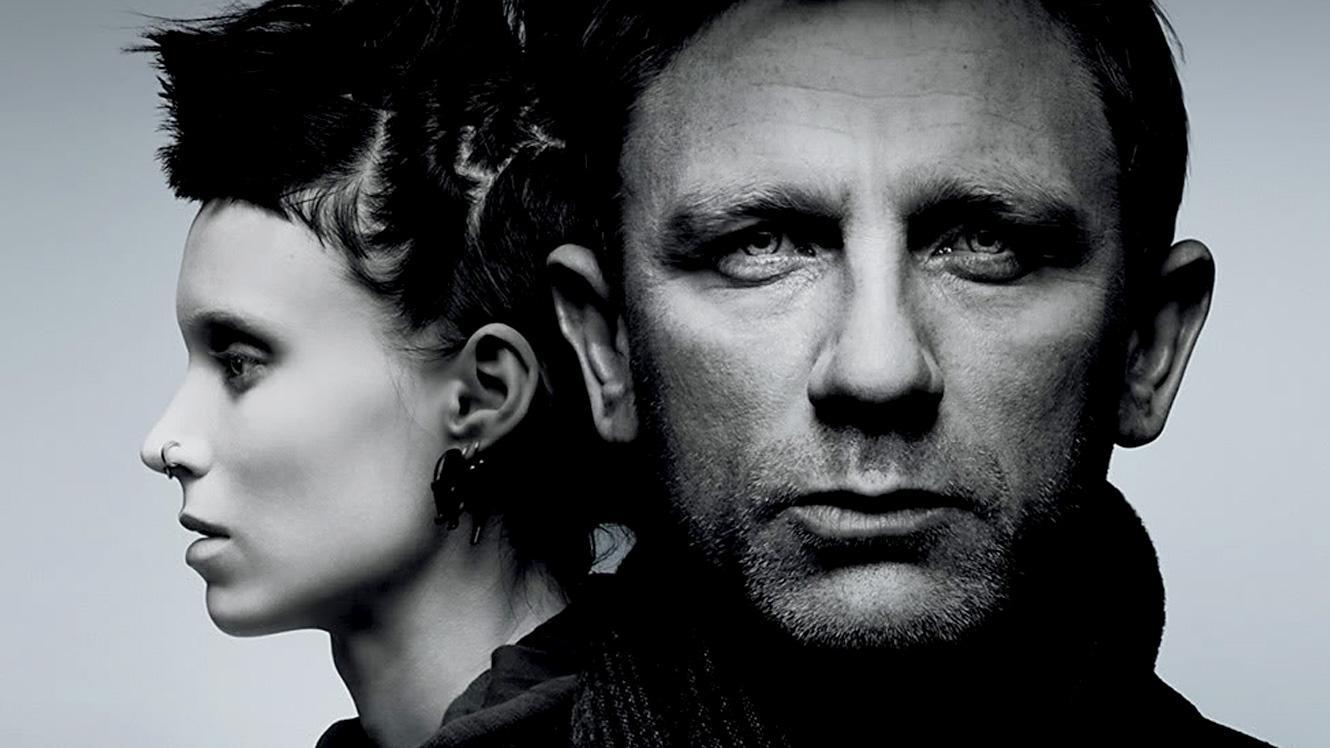
The narrative is tightly woven, with Fincher’s direction ensuring that the suspense and intensity of the original novel are effectively translated on screen. The story is not just a simple mystery; it’s an exploration of the characters’ pasts, their motivations, and the societal issues that the novel critiques. The investigation into the disappearance of Harriet Vanger becomes a journey into the heart of the Vanger family’s dark secrets, challenging both Blomkvist and Salander to confront their demons.
Daniel Craig’s performance is key to grounding the film’s complex narrative. He brings a gravitas and authenticity to the role, portraying Blomkvist as both vulnerable and resilient. His interactions with Mara’s Salander highlight the emotional and moral complexities of their characters, making their alliance one of the film’s most compelling aspects.
“The Girl with the Dragon Tattoo” is also notable for its visual style. Fincher and cinematographer Jeff Cronenweth uusethe stark, icy landscapes of Sweden to create a haunting atmosphere that underscores the film’s dark themes. The cinematography, together with Trent Reznor and Atticus Ross’s haunting score, enhances the sense of isolation, danger, and the unknown that pervades the story.
The film does not shy away from the novel’s graphic content, dealing with themes of violence, sexual assault, and justice. These elements are handled with care, serving the story’s exploration of revenge and redemption. Craig’s Blomkvist becomes a conduit for the audience, navigating the labyrinthine plot and the moral quandaries it presents.

In conclusion, “The Girl with the Dragon Tattoo” is a standout film in Daniel Craig’s career, showcasing his range beyond the Bond persona. His performance, combined with Fincher’s meticulous direction and compelling narrative, makes for a thrilling cinematic experience. The film remains a powerful adaptation of Larsson’s work, a testament to the enduring appeal of the story and its characters.
6. Quantum of Solace (2008): Continuity and Complexity in Bond’s World
“Quantum of Solace,” the 22nd film in the James Bond series and the second to feature Daniel Craig in the leading role, stands out for its direct narrative continuation from its predecessor, “Casino Royale.” Released in 2008 and directed by Marc Forster, this installment delves deeper into the emotional and psychological aftermath of Bond’s experiences in “Casino Royale,” offering a more complex and introspective look at the iconic character. While it navigated mixed reviews at its release, time has allowed for a reevaluation of its place within the Bond saga, highlighting its unique contributions to the evolution of Daniel Craig’s portrayal of the character.
Following the death of Vesper Lynd, Bond’s quest for revenge and answers leads him to uncover a clandestine organization known as Quantum. Unlike the stand-alone nature of many Bond films, “Quantum of Solace” weaves a tale of betrayal, environmental exploitation, and the murkier aspects of espionage, challenging Bond’s loyalties and his understanding of justice. The movie’s pace is relentless, characterized by a series of high-octane action sequences that, while sometimes critiqued for their rapid editing, underscore Bond’s turmoil and determination.
Daniel Craig’s performance in “Quantum of Solace” further cements his portrayal of Bond as a complex, multi-dimensional figure. Craig brings a palpable intensity to the role, reflecting Bond’s inner conflict and relentless pursuit of the truth behind Vesper’s betrayal. This Bond is bruised, both physically and emotionally, propelling the narrative with a personal vendetta that blurs the lines between duty and revenge. Craig’s ability to convey depth through minimalism adds layers to the character, showcasing his skills in bringing nuance to a role steeped in cinematic history.
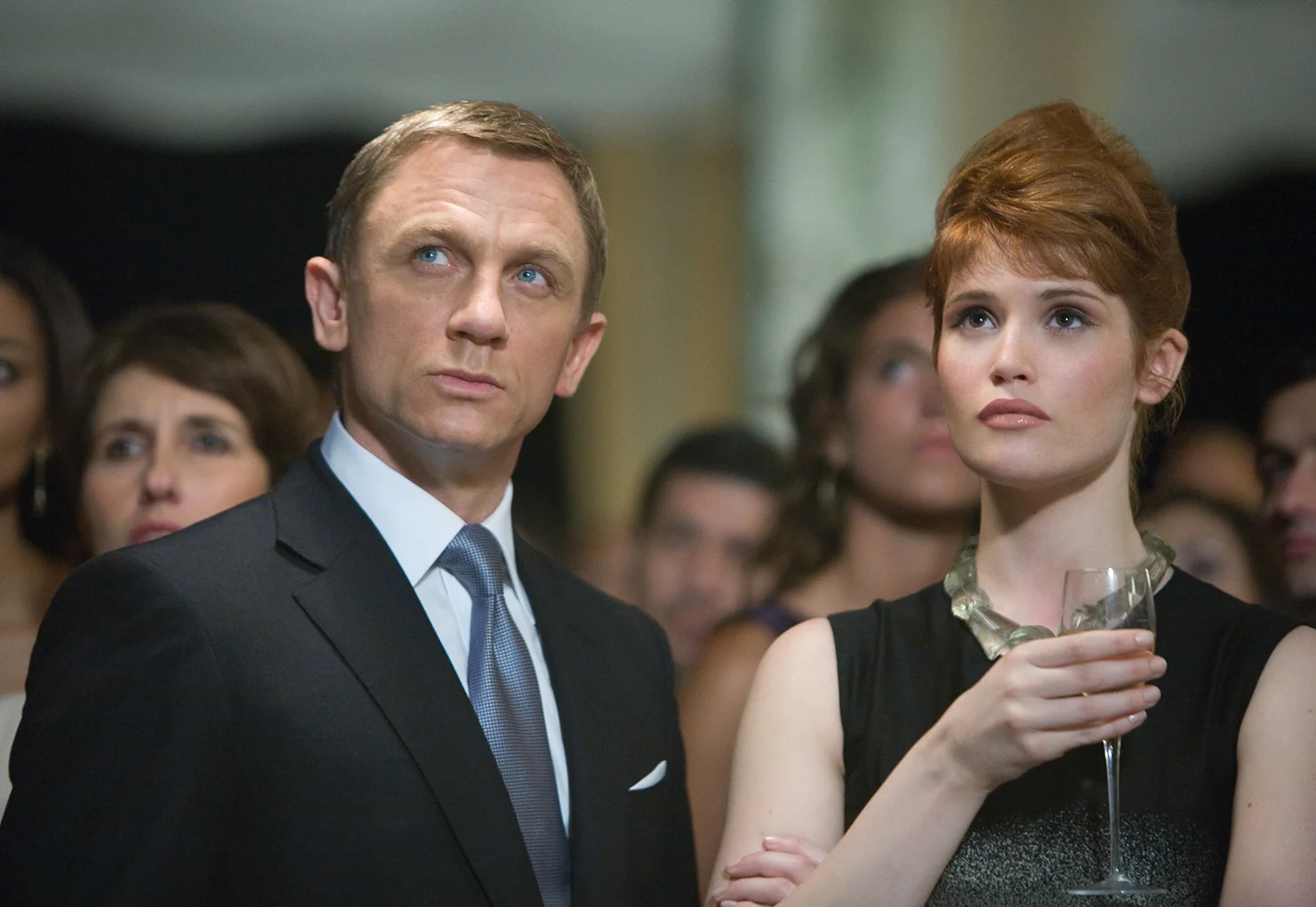
The film also explores themes of resource exploitation and political manipulation, with the antagonist, Dominic Greene (played by Mathieu Amalric), representing a new kind of villainy—one rooted in realism and the pursuit of power under the guise of environmentalism. This contemporary angle provides a backdrop for Bond’s actions, positioning him against a threat that is as much ideological as it is physical.
“Quantum of Solace” is visually distinctive, with Forster and cinematographer Roberto Schaefer capturing a range of locales from the stark beauty of the Bolivian desert to the historic streets of Siena, Italy. The film’s aesthetic complements its narrative drive, using visuals to enhance the story’s mood and the characters’ emotional states. The score, by David Arnold, adeptly supports the film’s tone, blending the traditional with the modern and reflecting the evolving nature of the Bond series.
While “Quantum of Solace” may have divided critics, its significance in the Bond series and Daniel Craig’s tenure as the character cannot be understated. It marks a transitional point, exploring the consequences of Bond’s actions and decisions in a way that few other films in the series have. It’s a testament to Craig’s prowess as an actor, capable of infusing the role with emotional depth and physicality.

In conclusion, “Quantum of Solace” offers a compelling look at James Bond’s journey, driven by Daniel Craig’s dynamic performance. It challenges traditional perceptions of the character, providing a storyline that is both a direct sequel and a standalone narrative. Its exploration of personal vendetta, coupled with global threats, makes it a unique and noteworthy chapter in the Bond saga.
7. Logan Lucky (2017): A High-Octane Heist with a Heart
“Logan Lucky,” released in 2017 and directed by Steven Soderbergh, is a sharp departure from the intense, dramatic roles Daniel Craig is often associated with, especially his portrayal of James Bond. In this heist comedy, Craig plays Joe Bang, an incarcerated explosives expert with a bleach-blond buzz cut and a penchant for hard-boiled eggs. This role showcases Craig’s versatility as an actor, allowing him to dive into a character that’s as charismatic and eccentric as he is skilled.
Set against the backdrop of the Charlotte Motor Speedway in North Carolina, “Logan Lucky” follows the Logan siblings – Jimmy (Channing Tatum), Clyde (Adam Driver), and Mellie (Riley Keough) – as they plan to pull off an elaborate robbery during the Coca-Cola 600, one of the biggest races of the year. The film is imbued with a distinctly Southern flavor, combining smart, quirky hhumorwith a plot that cleverly subverts the typical heist movie formula.
Daniel Craig’s performance is a standout, bringing both hhumorand depth to the role of Joe Bang. His comedic timing, coupled with a genuine Southern drawl, adds layers to a character that could easily have been a caricature. Craig’s Bang is both hilarious and endearing, contributing significantly to the film’s charm. His chemistry with Tatum and Driver is palpable, creating a dynamic trio that carries the film’s heart and humor.
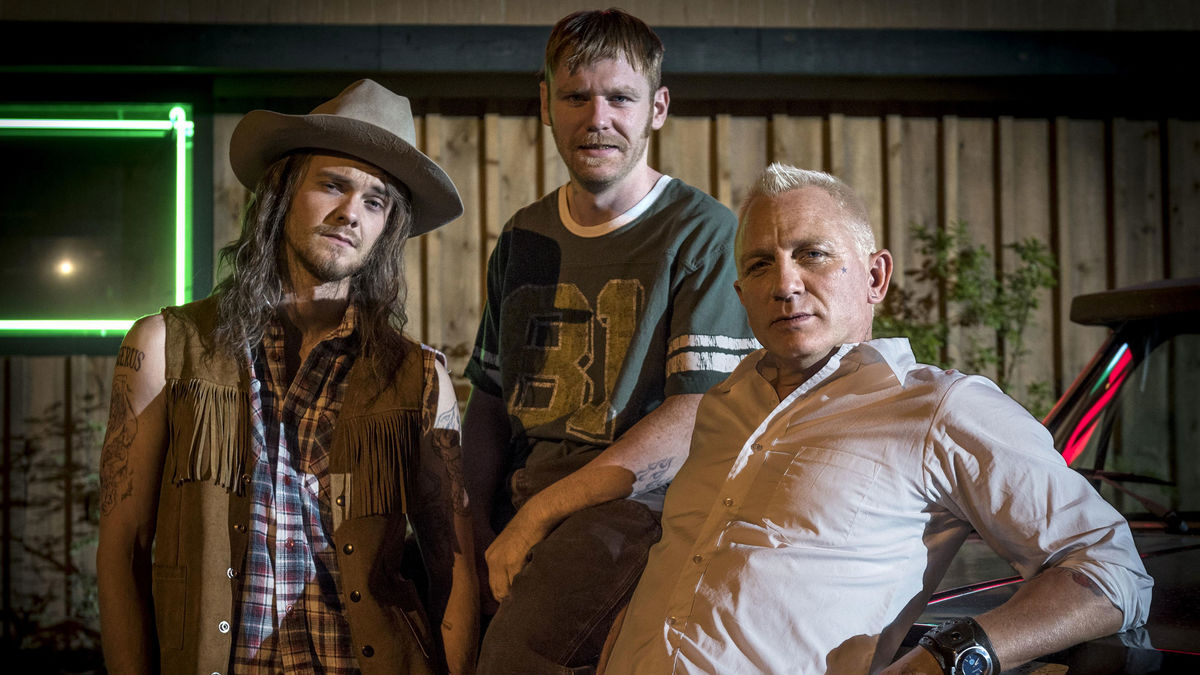
“Logan Lucky” is also a commentary on the socio-economic conditions of the American South, with Soderbergh using the heist narrative to explore themes of family, loyalty, and the desire for a better life. The Logans are not typical criminals; they are a family pushed to the edge by circumstances, making their caper something of an underdog story. The film humanizes its characters, providing backstories that flesh out their motivations and make their journey all the more compelling.
The heist itself is ingeniously planned and executed, with Soderbergh demonstrating his mastery of the genre. The film unfolds with precision and flair, balancing complex logistics with character-driven moments that build tension and humor. “Logan Lucky” manages to be both a successful heist film and a study of character, showcasing the director’s ability to blend genres to create something fresh and entertaining.
Visually, the film captures the vibrant, gritty atmosphere of the racetrack and the surrounding Southern landscape, adding authenticity and a sense of place to the story. The soundtrack, featuring a mix of country and Americana, complements the film’s tone perfectly, further immersing the audience in its world.

In conclusion, “Logan Lucky” is a testament to Daniel Craig’s range as an actor, proving he can shine outside the tuxedo of James Bond. His performance as Joe Bang is memorable, bringing both laughter and nuance to the screen. The film itself is a clever, engaging take on the heist genre, infused with a warmth and wit that set it apart. “Logan Lucky” is not just a heist movie; it’s a story about people striving for a slice of the American dream, making it both entertaining and thought-provoking.
8. Layer Cake (2004): The Role That Paved the Way for Bond
“Layer Cake,” directed by Matthew Vaughn in 2004, is a British crime thriller that significantly contributed to Daniel Craig’s rise as an international star, eventually leading to his casting as James Bond. In this film, Craig portrays an unnamed London-based drug dealer with a reputation for his professional and calculated approach to the business. Unlike the characters Craig would later embody in the Bond franchise, his character in “Layer Cake” is a cerebral figure, navigating the complexities of the criminal underworld with intelligence and a degree of caution.
The film’s title refers to the multiple layers of the drug trade, from the street dealers to the powerful kingpins orchestrating the business behind the scenes. Craig’s character is looking to retire but finds himself pulled deeper into this perilous world following a series of increasingly complex and dangerous tasks. His performance is nuanced, delivering a character who is both part of this world and yet distinctly apart, due to his desire for a clean break and a more legitimate life.
“Layer Cake” is characterized by its stylish direction and sharp script, which blends dark humor with tense, dramatic sequences. Craig’s role required a balance of physicality and intellect, showcasing his ability to convey thoughtfulness and intensity, traits that would later define his portrayal of James Bond. His character’s journey through the film’s twists and turns highlights his adaptability and depth as an actor, proving his capability to lead a film with both charm and gravitas.
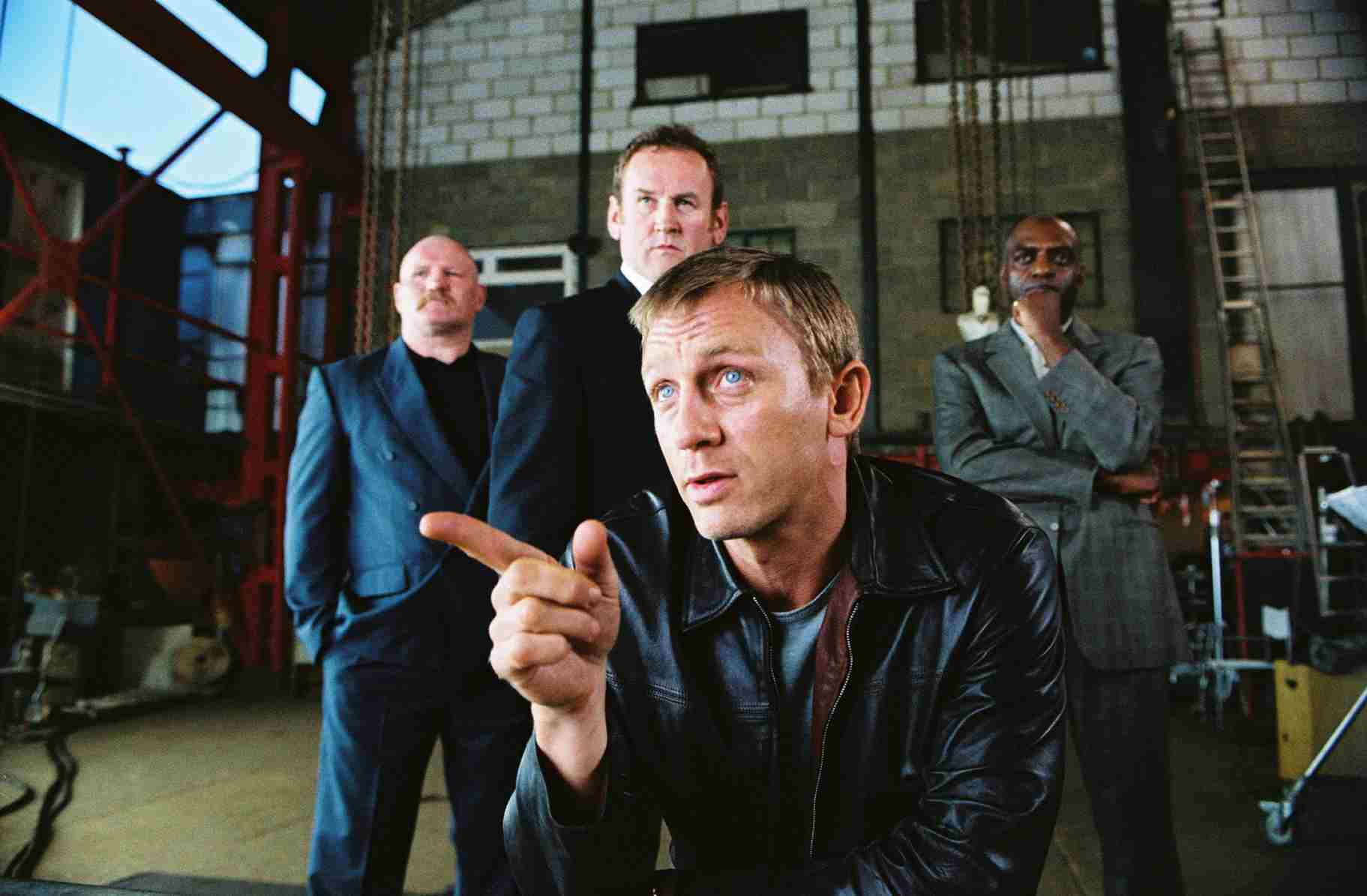
The supporting cast, including Michael Gambon, Tom Hardy, and Sienna Miller, among others, contribute to the film’s rich tapestry of characters, each adding layers to the intricate plot. The film’s aesthetic, from its cinematography to its use of London’s urban landscape, creates a backdrop that complements the story’s tension and the characters’ complexity.
“Layer Cake” was critically acclaimed for its stylish execution and compelling storytelling, standing out in the British crime genre for its intelligence and wit. It played a pivotal role in demonstrating Daniel Craig’s range as an actor, showcasing his ability to carry a film as its lead and handle a complex character with ease. This performance undoubtedly contributed to his casting as James Bond, offering a glimpse of the qualities he would bring to the iconic role.
The film explores themes of loyalty, ambition, and the elusive nature of freedom, particularly within the confines of the criminal underworld. Craig’s character’s attempt to navigate these themes, seeking a way out while being pulled deeper into chaos, resonates with the audience, making “Layer Cake” not just a crime thriller but a story about the cost of ambition and the complexity of human desire.

In conclusion, “Layer Cake” is a critical entry in Daniel Craig’s filmography, marking a significant turning point in his career. His performance in the film is a testament to his talent and versatility, elements that he would carry into his portrayal of James Bond and beyond. “Layer Cake” remains a standout film, both for its contribution to the crime genre and for its role in shaping one of cinema’s most enduring stars.
9. Knives Out (2019): A Modern Whodunit Classic
“Knives Out,” directed and written by Rian Johnson, emerged as a standout film in 2019, breathing new life into the whodunit genre. Daniel Craig stars as the enigmatic and highly skilled private detective, Benoit Blanc, whose Southern drawl and keen observational skills quickly became iconic. This film allowed Craig to step away from the intense, brooding roles he’s best known for, like James Bond, showcasing his versatility and comedic timing in a role that is as entertaining as it is clever.
Set against the backdrop of a grand, old mansion owned by the wealthy Thrombey family, “Knives Out” unfolds following the suspicious death of patriarch Harlan Thrombey (Christopher Plummer). The plot weaves through a maze of red herrings, secrets, and family dynamics, with Blanc at the center, trying to untangle the web of lies and reveal the truth. The ensemble cast, including Chris Evans, Ana de Armas, Jamie Lee Curtis, and Michael Shannon, among others, delivers exceptional performances, each adding depth and humor to the story.
Craig’s portrayal of Detective Blanc is both a homage to and a reinvention of the classic detective archetype. His performance is nuanced, blending seriousness with whimsy in a way that captivates the audience. Craig’s chemistry with the cast, especially Ana de Armas, adds a layer of humanity and empathy to his character, making Blanc more than just a caricature of a detective. His ability to command the screen, delivering lines with a mix of humor and gravity, highlights his range as an actor.
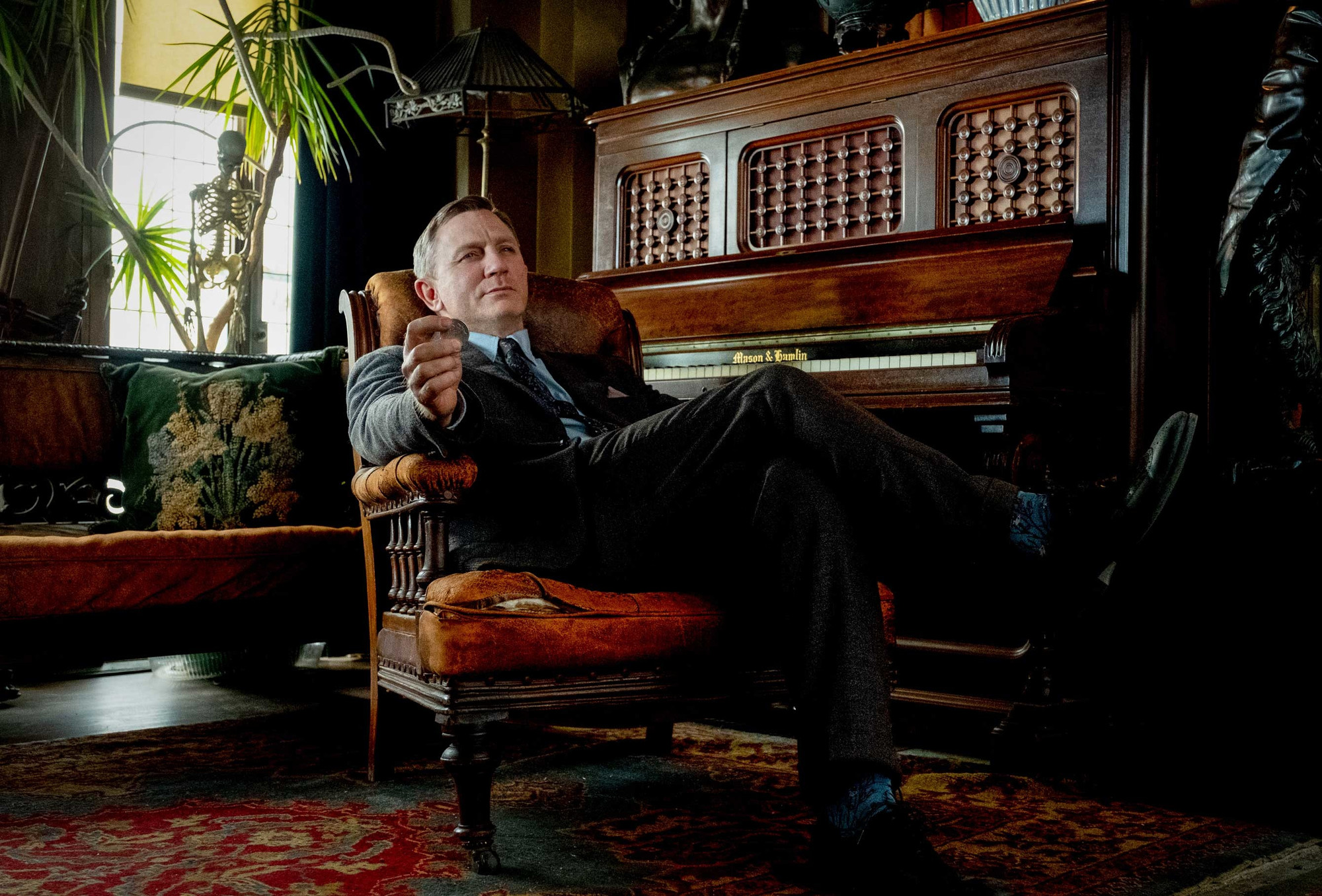
The film’s success lies in its ability to balance genre conventions with innovation. Johnson’s script is sharp and witty, packed with social commentary and a critique of privilege and entitlement. “Knives Out” is not just a mystery; it’s a commentary on contemporary society, cleverly wrapped in the guise of entertainment. The direction is meticulous, with Johnson paying close attention to detail, from the intricately designed set to the carefully plotted narrative twists.
Visually, “Knives Out” is a feast, with the Thrombey mansion serving as a character in its own right. The cinematography by Steve Yedlin complements the film’s tone perfectly, enhancing the suspense and the drama with its use of light and shadow. The score, composed by Nathan Johnson, adds to the film’s atmosphere, underpinning the tension and the drama with a musical backdrop that is both haunting and whimsical.
“Knives Out” was met with critical acclaim and audience adoration, praised for its clever plot, engaging performances, and modern take on the murder mystery genre. It reinvigorated interest in whodunits, proving that there is still a place for smart, character-driven mysteries in cinema. The film’s success has led to the development of a sequel, with Craig reprising his role as Benoit Blanc, much to the delight of fans.

In conclusion, “Knives Out” stands as a testament to Daniel Craig’s talent and versatility as an actor. His role as Detective Benoit Blanc showcases his ability to break away from the physicality and intensity of James Bond, offering a performance that is both engaging and endearing. “Knives Out” not only provided a fresh take on the murder mystery genre but also solidified Craig’s position as one of the most talented actors of his generation, capable of bringing depth and nuance to a wide range of characters.
10. Road to Perdition (2002): An Early Highlight in Daniel Craig’s Career
“Road to Perdition,” directed by Sam Mendes and released in 2002, is a powerful, visually stunning film set during the Great Depression, showcasing Daniel Craig in one of his early significant roles. This film, based on the graphic novel by Max Allan Collins and Richard Piers Rayner, stands out for its compelling narrative, strong performances, and atmospheric direction. Craig plays Connor Rooney, the son of a mob boss, in a role that is pivotal to the film’s exploration of themes such as vengeance, redemption, and the bonds between fathers and sons.
The film centers on Michael Sullivan (Tom Hanks), a hitman for the Irish mob who finds himself and his son targeted after his son witnesses his work. Craig’s character, Connor Rooney, is crucial to the story’s conflict, with his actions setting the tragic narrative in motion. Craig delivers a chilling performance as Connor, embodying the jealousy, volatility, and cruelty of his character with a subtlety that hints at the complex familial and personal motivations driving him.
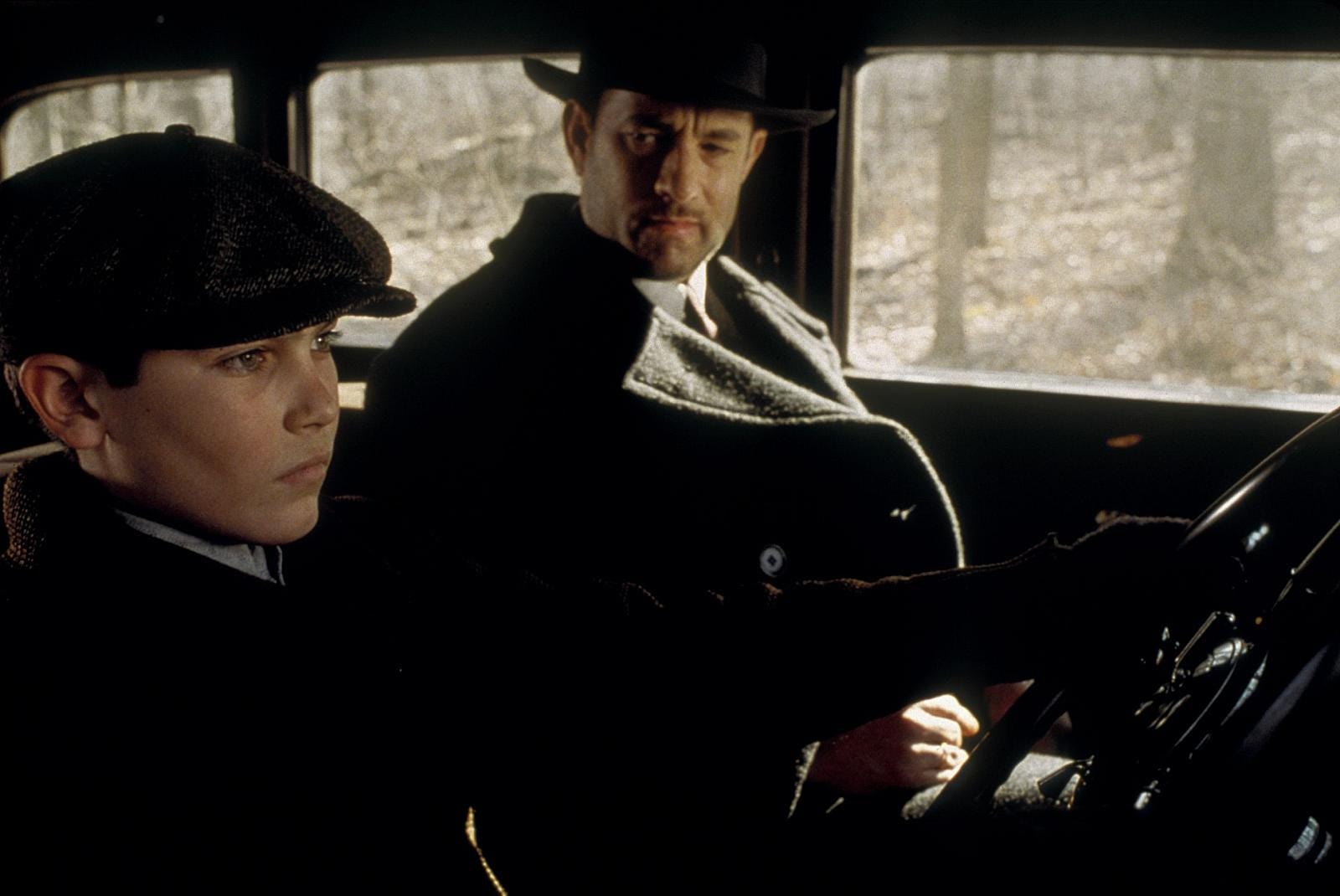
“Road to Perdition” is notable for its exploration of the relationships between fathers and sons, with the dynamic between Connor and his father, John Rooney (Paul Newman), providing a stark contrast to that of Michael Sullivan and his son. Craig’s portrayal of Connor’s desperate need for approval and recognition from his father adds depth to his character, making him a more sympathetic figure despite his actions. This complexity is a testament to Craig’s skill as an actor, showcasing his ability to bring nuance to even the most morally ambiguous characters.
The film’s direction by Sam Mendes is masterful, with “Road to Perdition” distinguished by its cinematography, courtesy of Conrad L. Hall. The visual style of the film complements its somber mood, with its use of light and shadow contributing to an atmosphere that is both haunting and beautiful. The score by Thomas Newman further enhances the film’s emotional weight, underscoring the themes of loss and redemption that are central to the narrative.

“Road to Perdition” received widespread acclaim for its storytelling, performances, and technical achievements. The film is a departure from the typical gangster genre, focusing on the emotional and moral dilemmas faced by its characters. Craig’s role in the film, though not the lead, is significant, offering him the opportunity to work alongside acting greats like Hanks and Newman. His performance in “Road to Perdition” was an early indicator of his versatility and depth as an actor, qualities that would define his career in the years to come.
Daniel Craig’s filmography presents a portrait of an actor unafraid to challenge himself and his audience, to explore the nuances of identity, loyalty, and morality through a diverse array of characters. As he steps away from the role of James Bond, his career continues to evolve, promising future performances that will captivate and intrigue him.
Craig’s journey through cinema is a testament to the power of storytelling and the enduring appeal of characters who are, at their core, deeply human. His legacy is one of diversity, intensity, and an undeniable contribution to the art of film. His performances in “Casino Royale” and “Skyfall” not only revitalized the James Bond franchise but also cemented his status as one of the finest actors to have taken on the role, balancing the physicality and charm expected of the character with a previously unseen emotional vulnerability.
Meanwhile, films like “The Girl with the Dragon Tattoo” and “Knives Out” allowed Craig to explore different facets of his craft, from the intensity of investigative journalist Mikael Blomkvist to the quirky brilliance of detective Benoit Blanc, showcasing his range and adaptability.


